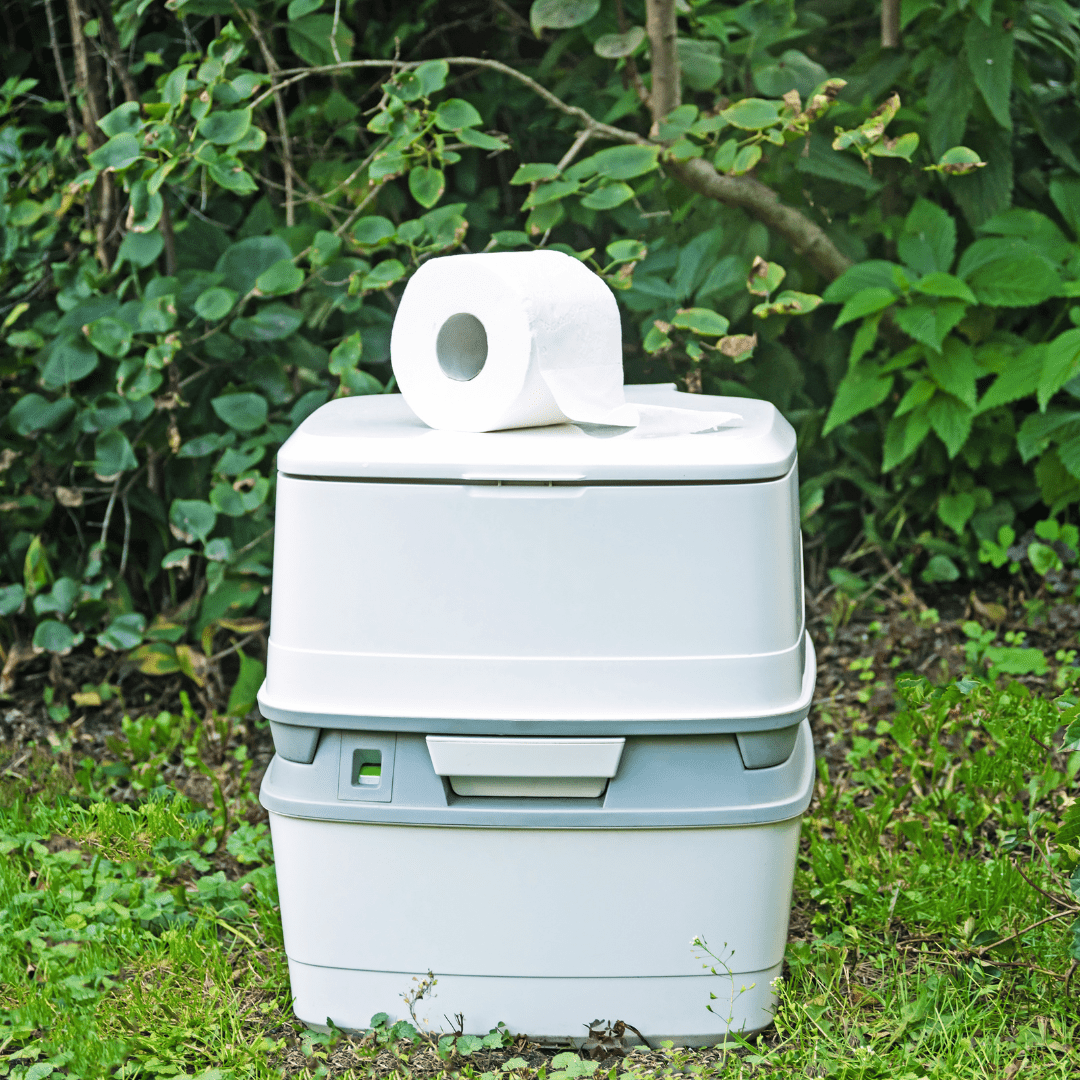Composting toilet systems are surging as more people look for off-grid and sustainable alternatives to traditional septic tanks. This post breaks down why composting toilets are gaining popularity, how they work, and whether ditching your septic tank makes sense for a more self-sufficient lifestyle.
For years, composting toilets were brushed off as impractical or “too extreme.” Lately, that mindset is changing. With septic systems getting more expensive and water resources feeling increasingly fragile, more people are rethinking how they handle waste at home.
In this post, I’ll explain why composting toilet systems are surging in popularity, how they work, and why they’re becoming a go-to solution for off-grid living, sustainability, and long-term self-sufficiency. Whether you live off-grid, are planning ahead, or just want a more resilient setup, this guide will help you decide if ditching your septic tank is right for you.
This is a pinnable post. Tap or hover over any image in this post to pin to your Pinterest Boards.
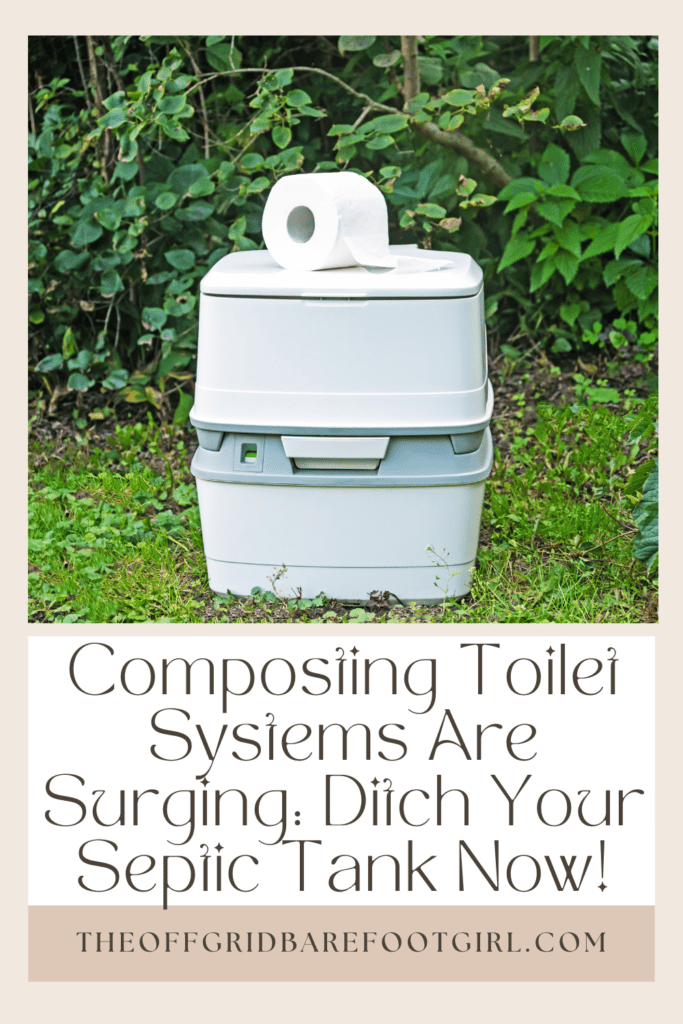
Introduction to Composting Toilet Systems
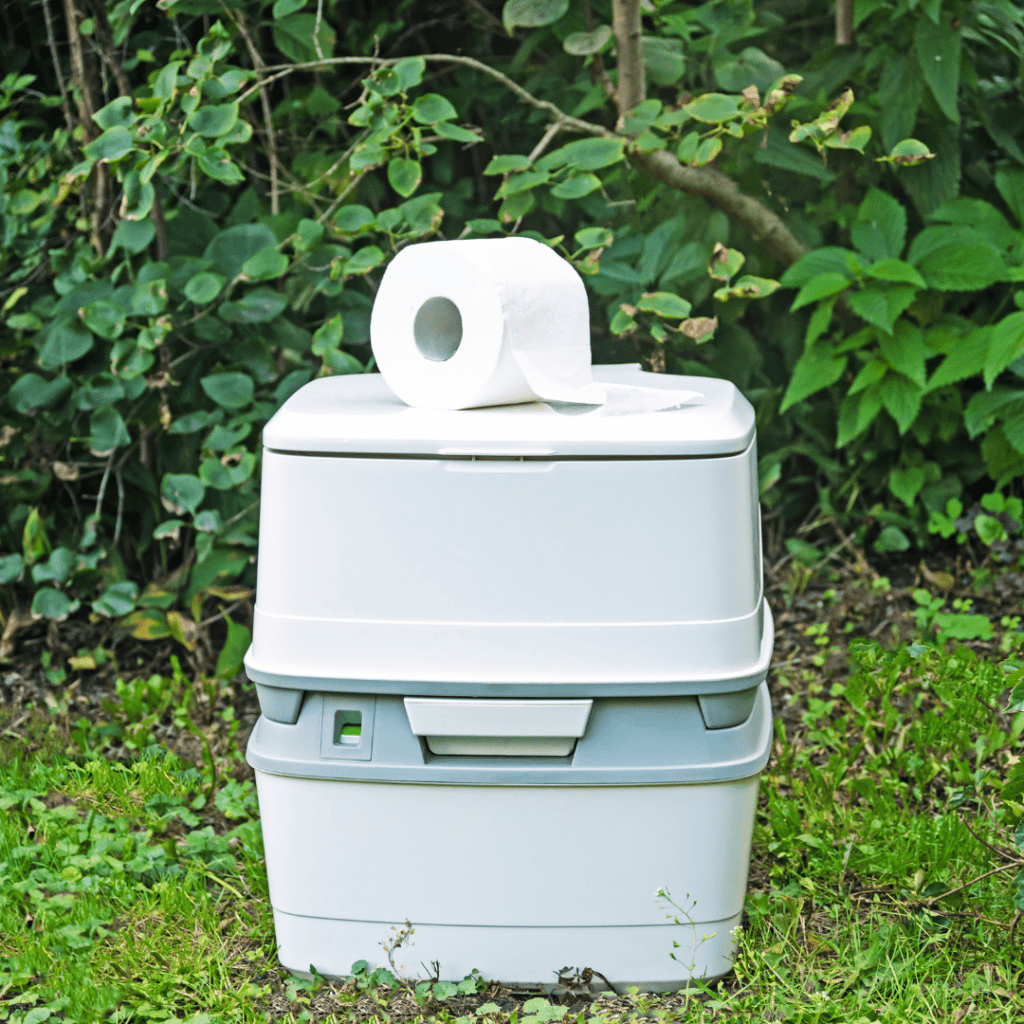
Explanation of the Surge In Popularity of Composting Toilet Systems
Let’s explore why composting toilet systems are gaining popularity! As more people embrace sustainable living, composting toilets have become a go-to choice for eco-conscious individuals. These systems offer a range of benefits, from reducing water usage to producing nutrient-rich compost.
Check out several reasons why composting toilet systems are experiencing a surge in popularity.
Why Composting Toilet Systems are Surging In Popularity
- Environmental Awareness: Growing concern about environmental sustainability and the desire to reduce water consumption and waste pollution are driving individuals and communities to seek alternative sanitation solutions like composting toilets.
- Water Conservation: Composting toilets use little to no water compared to traditional flush toilets, making them an attractive option for regions facing water scarcity or drought conditions.
- Off-Grid Living: Composting toilets are well-suited for off-grid properties, cabins, tiny homes, and other remote locations where access to conventional sewage infrastructure may be limited or impractical.
- Cost Savings: Installing and maintaining composting toilet systems can be more cost-effective in the long run compared to traditional sewage systems, especially in areas with high installation or maintenance costs for septic tanks or municipal sewage connections.
- Versatility and Flexibility: Composting toilets come in various designs and sizes, offering flexibility in installation options and adaptability to different living situations and environmental conditions.
- Reduced Environmental Impact: Composting toilets divert organic waste from landfills, reducing methane emissions and nutrient pollution in water bodies. The resulting compost can be used as a nutrient-rich soil amendment, promoting sustainable agriculture and landscaping practices.
- Resilience to Climate Change: Composting toilets provide decentralized sanitation solutions that are resilient to climate change-related challenges such as extreme weather events and disruptions to centralized infrastructure.
- Regulatory Support and Incentives: Some regions offer incentives, rebates, or regulatory exemptions for installing composting toilet systems as part of efforts to promote sustainable development and reduce the strain on existing sewage infrastructure.
- Advancements in Technology: Continuous innovation and improvements in composting toilet technology have made these systems more efficient, odor-free, and user-friendly, enhancing their appeal to a broader audience.
- Educational Outreach and Awareness: Increased educational efforts and awareness campaigns about composting toilets’ benefits and functionality have helped demystify these systems and overcome misconceptions, contributing to their rising popularity.
Importance of Sustainability and Eco-Friendly Practices
As stewards of our planet, it’s crucial for us to recognize the profound impact our actions have on the environment. By embracing sustainable practices, we not only preserve the natural world for future generations, but also foster healthier ecosystems and communities. From reducing our carbon footprint to conserving precious resources like water and energy, every small step we take towards eco-friendliness makes a meaningful difference.
The Benefits of Composting Toilet Systems
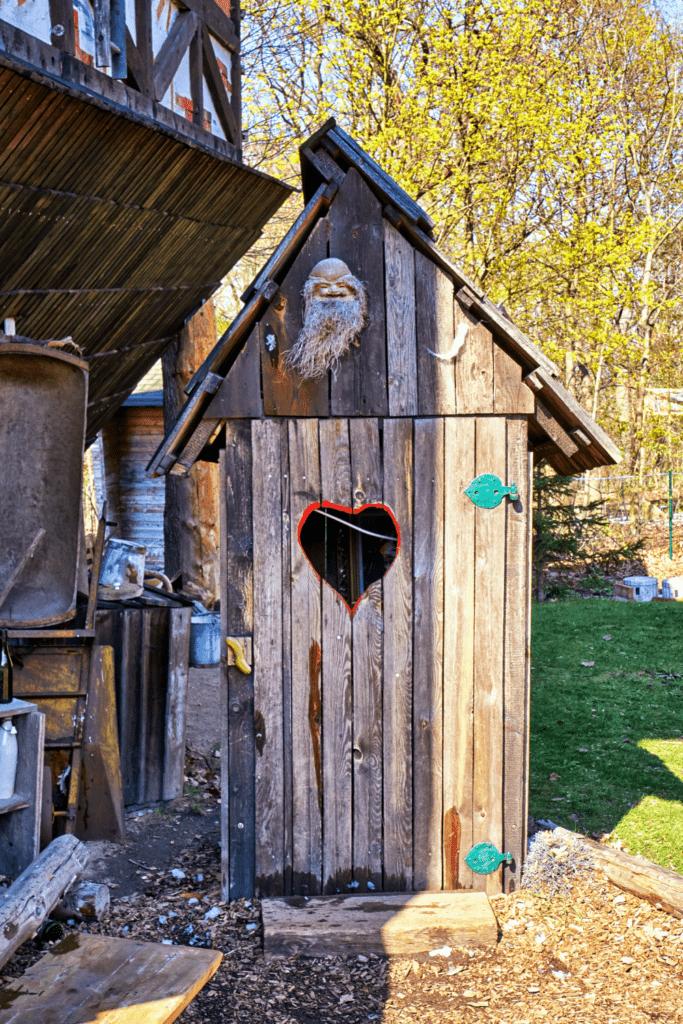
Environmental Benefits of Composting Toilet Systems
These innovative solutions offer a sustainable alternative to traditional sewage systems, significantly reducing water usage and waste pollution. By diverting organic waste from landfills, composting toilets help mitigate methane emissions and nutrient pollution, safeguarding our precious ecosystems.
The nutrient-rich compost produced can be utilized to enrich soil health and support sustainable agriculture practices. Embracing composting toilets isn’t just about improving sanitation—it’s about making a positive impact on the planet we call home.
Promoting a Cleaner and Healthier Planet!
Here are some environmental benefits of composting toilet systems:
- Water Conservation: Composting toilets require little to no water for flushing, helping to conserve precious freshwater resources.
- Reduced Pollution: By composting waste onsite, these systems minimize the release of pollutants into water bodies and soil, reducing environmental contamination.
- Decreased Greenhouse Gas Emissions: Composting toilets prevent the release of methane, a potent greenhouse gas, by promoting aerobic decomposition of waste instead of anaerobic decomposition in landfills.
- Nutrient Recycling: Human waste processed in composting toilets produces nutrient-rich compost, which can be used to enrich soil and support plant growth without the need for synthetic fertilizers.
- Energy Savings: Composting toilets operate without the need for electricity or significant energy input, reducing overall energy consumption and associated environmental impacts.
- Protection of Ecosystems: By minimizing pollution and conserving resources, composting toilet systems contribute to the preservation of ecosystems and biodiversity.
- Resilience to Climate Change: Composting toilets offer decentralized sanitation solutions that are less vulnerable to disruptions caused by extreme weather events, making them more resilient in the face of climate change.
- Promotion of Sustainable Practices: Embracing composting toilet systems encourages individuals and communities to adopt sustainable living practices, fostering a culture of environmental stewardship and responsibility.
These environmental benefits highlight the importance of composting toilet systems in promoting a cleaner, healthier planet for current and future generations.
Resource Conservation of Composting Toilet Systems
Let’s celebrate the incredible impact of these innovative solutions together! Composting toilets are not just about waste management; they’re about maximizing efficiency and minimizing our environmental footprint. By using minimal to no water for flushing, composting toilets help conserve precious freshwater resources, making them an ideal choice for areas facing water scarcity or drought.
The nutrient-rich compost produced from human waste serves as a valuable resource for enriching soil fertility, reducing the need for synthetic fertilizers, and promoting sustainable agriculture practices. With composting toilet systems, we’re not just disposing of waste—we’re harnessing its potential to nourish the earth and support ecosystems.
How Composting Toilets Work
These innovative systems operate through a simple yet ingenious process that transforms human waste into nutrient-rich compost. It’s truly remarkable how nature’s processes can be harnessed to create something valuable from what would otherwise be considered waste.
- When waste enters the toilet, it is mixed with organic materials such as sawdust or peat moss to facilitate decomposition.
- Beneficial microorganisms break down the waste aerobically, converting it into compost over time.
- This composting process occurs within a specially designed chamber, where adequate ventilation ensures proper airflow and odor control.
- As the waste decomposes, it gradually transforms into a valuable soil amendment that can be safely used in gardening, landscaping, and agriculture.
With composting toilets, we’re not just managing our waste; we’re turning it into a resource that nourishes the earth and supports sustainable practices. It’s a brilliant solution that aligns perfectly with our goal of living in harmony with nature.
Here’s a Breakdown of How Composting Toilets Work
- Waste Collection: Human waste, along with a bulking agent such as sawdust, coconut coir, or peat moss, is deposited into the toilet bowl.
- Aerobic Decomposition: Inside the composting toilet, beneficial aerobic bacteria break down the waste material, converting it into compost. Adequate ventilation ensures that oxygen is supplied to support aerobic decomposition.
- Moisture Control: Composting toilets are designed to regulate moisture levels to optimize the composting process. Some systems incorporate a urine-diverting feature to separate urine from solid waste, reducing moisture content and odors.
- Temperature Regulation: Proper temperature management within the composting chamber promotes microbial activity and accelerates decomposition. Insulation or heating elements may be included in some composting toilet designs to maintain optimal temperatures.
- Odor Control: Ventilation systems and vent pipes help dissipate odors and maintain a fresh environment within the composting toilet. Carbon-rich materials like sawdust or coconut coir also help absorb odors and balance the composting process.
- Compost Maturation: Over time, the waste undergoes decomposition and maturation, gradually transforming into nutrient-rich compost. The composting process may take several months to complete, depending on factors such as temperature, moisture levels, and the type of bulking agent used.
- Compost Removal: Once the composting process is complete, the mature compost can be safely removed from the composting chamber. It can then be used as a soil amendment in gardening, landscaping, or agriculture, providing valuable nutrients to plants and improving soil health.
By harnessing natural processes of decomposition and microbial activity, composting toilets offer a sustainable and environmentally friendly solution for managing human waste while producing nutrient-rich compost for soil enrichment.
Cost Savings Benefits of Using Composting Toilet Systems
These innovative solutions not only offer environmental advantages but also help save you money in the long run. By requiring minimal to no water for flushing, composting toilets significantly reduces water usage, leading to lower water bills and the conservation of precious freshwater resources.
Composting toilets eliminates the need for costly sewage infrastructure, such as septic tanks or municipal sewage connections, saving you on installation, maintenance, and service fees. Also, the nutrient-rich compost produced can be used as a valuable soil amendment, reducing the need for store-bought fertilizers and promoting healthier plant growth in your garden or landscaping.
Health and Hygiene Advantages of Composting Toilet Systems
These innovative solutions not only offer environmental benefits but also prioritize your well-being and safety. By promoting the aerobic decomposition of waste, composting toilets minimize the risk of harmful pathogens and foul odors commonly associated with traditional sewage systems.
With proper ventilation and moisture control, composting toilets create a clean and odor-free environment, enhancing your comfort and hygiene. By eliminating the need for sewage infrastructure, such as septic tanks or sewage treatment plants, composting toilets reduce the risk of sewage leaks and contamination, safeguarding both human health and the environment.
Comparison with Traditional Septic Tanks
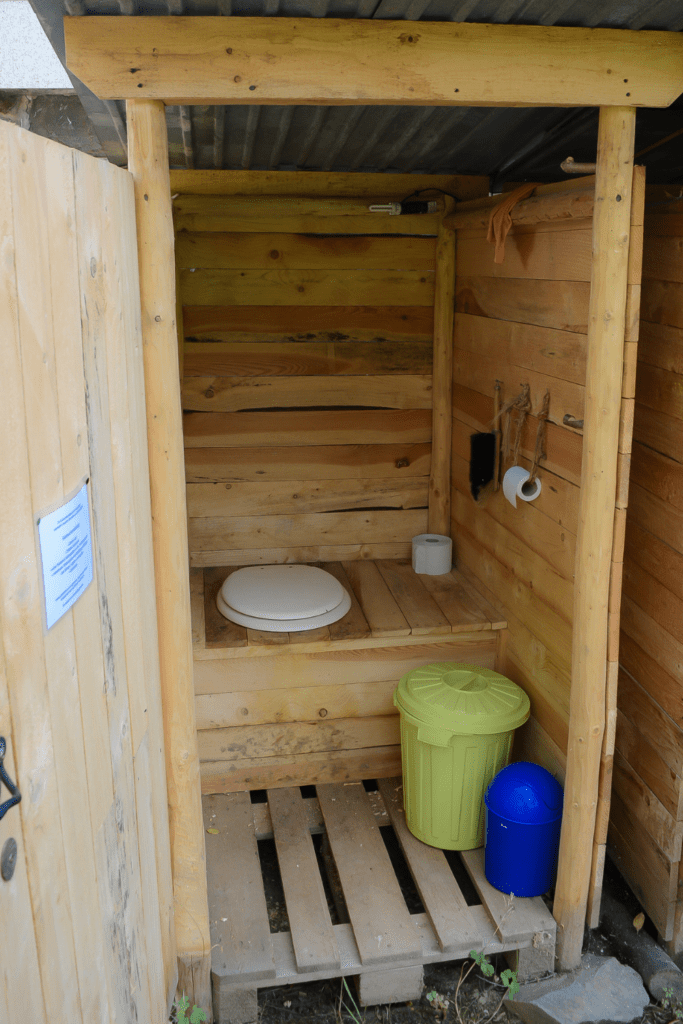
Functionality Differences of Composting vs Traditional Toilets
Composting Toilets
Composting toilets operate by utilizing natural processes to break down waste into compost, without the need for water for flushing. They’re perfect for off-grid living, eco-conscious households, or areas with limited water access.
Traditional Toilets
On the other hand, traditional flush toilets use water to transport waste through sewage systems to treatment plants or septic tanks. While they’re widespread and convenient in urban areas, they can contribute to water scarcity and pollution.
By understanding the functionality differences between composting and traditional toilets, we empower ourselves to make informed choices that align with our sustainability goals.
Maintenance Requirements for Composting Toilet Systems
These eco-friendly solutions offer not only environmental benefits, but also ease of maintenance. Regular upkeep is crucial to ensure optimal performance and longevity of your composting toilet.
This includes monitoring moisture levels, adding bulking agents as needed, and periodically emptying the composting chamber. Fortunately, maintenance tasks are relatively simple and can be easily integrated into your routine.
With proper care and attention, composting toilets remain odor-free and efficient, providing a sustainable and hassle-free sanitation solution for your home or property.
How to Maintain an Odor-Free Composting Toilet System
- Monitoring Moisture Levels: Regularly check the moisture content within the composting chamber to ensure optimal conditions for decomposition. Excess moisture can lead to unpleasant odors and hinder composting efficiency.
- Adding Bulking Agents: Add bulking agents such as sawdust, coconut coir, or peat moss regularly to absorb excess moisture, improve aeration, and facilitate the composting process.
- Emptying the Composting Chamber: Periodically empty the composting chamber once the compost has reached maturity. The frequency of emptying depends on factors such as usage rate and chamber size.
- Ventilation Maintenance: Ensure that ventilation systems, such as fans or vent pipes, are functioning properly to promote airflow and odor control within the composting toilet system.
- Cleaning Surfaces: Clean the surfaces of the composting toilet regularly to prevent the buildup of bacteria and odors. Use mild, environmentally friendly cleaners to avoid damaging the system or harming beneficial microbes.
- Inspecting Seals and Gaskets: Check seals and gaskets for signs of wear or damage and replace them as needed to prevent leaks and maintain airtight conditions within the composting toilet system.
- Monitoring Temperature: Maintain optimal temperature conditions within the composting chamber to support microbial activity and accelerate the composting process.
By staying proactive with these maintenance tasks, you can ensure that your composting toilet system operates smoothly and effectively, providing a sustainable and odor-free sanitation solution for your home or property.
Cost Comparisons of Composting vs Traditional Toilets
Composting toilets offer significant cost-saving benefits over their traditional counterparts. With minimal water usage and no need for costly sewage infrastructure, composting toilets can help you save on water bills, installation, and maintenance fees.
The nutrient-rich compost produced can reduce your expenses on store-bought fertilizers, promoting sustainable gardening practices and healthier plant growth.
While traditional toilets may seem convenient upfront, the long-term savings and environmental benefits of composting toilets make them an attractive and economical choice.
Environmental Impact of Composting Toilet Systems vs Septic Tanks
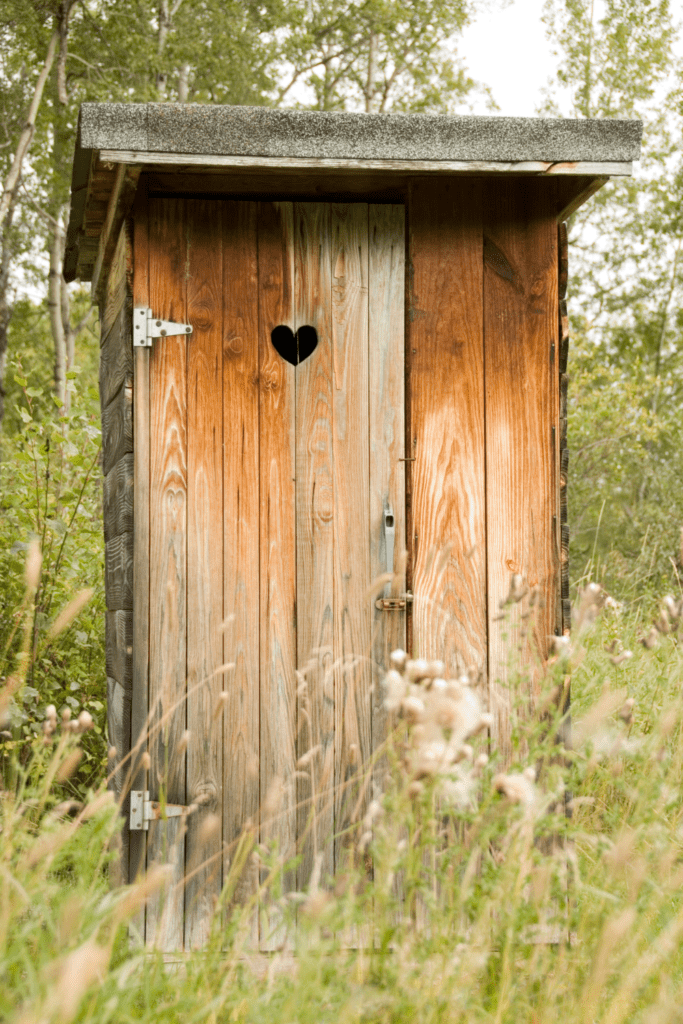
The Environmental Benefits of Composting Toilet Systems
The environmental benefits of composting toilet systems are significant and diverse:
- Water Conservation: Composting toilets reduce the demand for fresh water that traditional flush toilets require for flushing waste. This is particularly important in regions experiencing water scarcity or drought.
- Reduced Pollution: Unlike conventional sewage treatment systems, composting toilets do not contribute to nutrient pollution in water bodies. They eliminate the need for wastewater treatment plants, reducing the risk of contamination from sewage leaks or overflows.
- Energy Savings: Composting toilets require minimal or no energy to operate, unlike sewage treatment plants that consume significant amounts of energy for pumping, aeration, and treatment processes. This translates to lower greenhouse gas emissions associated with energy production.
- Nutrient Recycling: Composting toilets transform organic waste into nutrient-rich compost, which users can safely utilize as fertilizer for gardens, landscaping, and agriculture.
- This closed-loop system reduces the need for synthetic fertilizers, thereby minimizing the environmental impact of chemical runoff and leaching into water sources.
There Are Even More Environmental Benefits!
- Reduced Carbon Footprint: Composting toilets divert organic waste from landfills, where it would otherwise decompose anaerobically and release methane, a potent greenhouse gas. By facilitating aerobic decomposition, composting toilets help mitigate climate change by minimizing methane emissions.
- Preservation of Ecosystems: By conserving water resources and reducing pollution, composting toilets contribute to the preservation of natural ecosystems, including freshwater habitats, marine environments, and terrestrial ecosystems.
- Resilience to Climate Change: Composting toilets offer decentralized sanitation solutions that are resilient to climate change-related challenges such as extreme weather events, flooding, and disruptions to centralized infrastructure. They can be particularly valuable in rural or remote areas with limited access to water and sewage services.
Overall, composting toilet systems promote sustainable resource management, protect water quality, and contribute to the resilience of ecosystems, making them an environmentally beneficial alternative to traditional sewage disposal methods.
For more sustainable water conservation practices, check out my detailed post regarding greywater tanks and how they are beneficial for your home!
Are Greywater Tanks the Key to Sustainable Living? Find Out Now!
Types of Composting Toilets
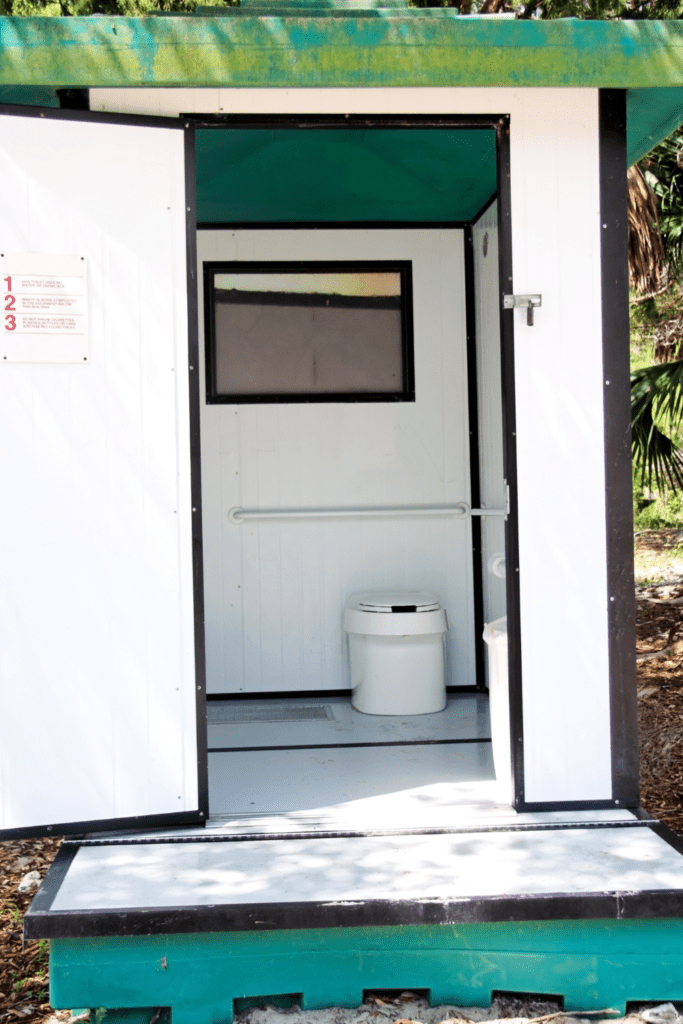
Composting toilets come in various types, each offering unique features and advantages.
- Self-contained composting toilets, perfect for off-grid living or small spaces, require no water or external connections and manage waste onsite.
- Central composting toilets, ideal for larger households or commercial settings, collect waste in a central chamber for centralized composting.
- There are continuous composting toilets, which allow for continuous use while composting occurs, and batch composting toilets, which process waste in separate batches for efficient decomposition.
With a range of options to choose from, there’s a composting toilet system to suit every need and lifestyle.
Installation and Maintenance of Composting Toilet Systems
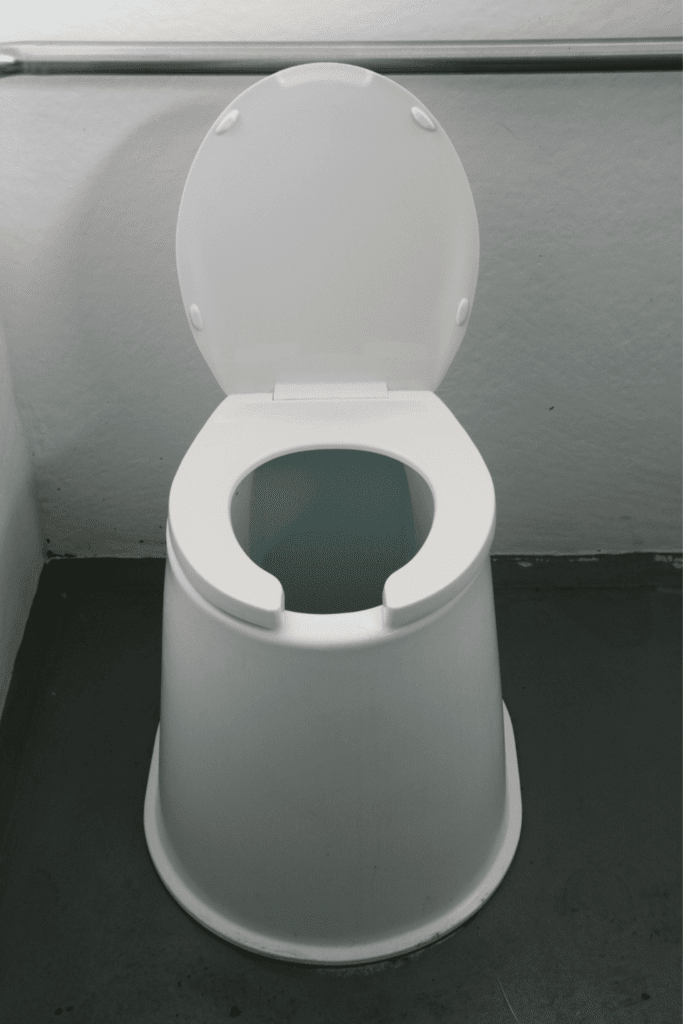
Installation of Composting Toilet Systems
Installing a composting toilet is a straightforward and rewarding process that begins with selecting the right model for your needs and space. Whether you’re retrofitting an existing bathroom or designing a new eco-friendly home, composting toilets offer versatility and flexibility in installation options.
These systems can easily integrate into any property with simple plumbing connections and minimal space requirements.
Plus, with no need for external water or sewage connections, composting toilets are perfect for off-grid living or environmentally conscious households.
Maintenance of Composting Toilet Systems
Keeping your composting toilet in top condition is key to ensuring its efficient and odor-free operation. Regular maintenance tasks include monitoring moisture levels, adding bulking agents as needed, and periodically emptying the composting chamber.
Thankfully, these tasks are straightforward and easily integrated into your routine. With proper care and attention, composting toilets remain a hassle-free and sustainable sanitation solution for your home or property.
Future Trends in Sustainable Sanitation: Embracing Composting Toilets
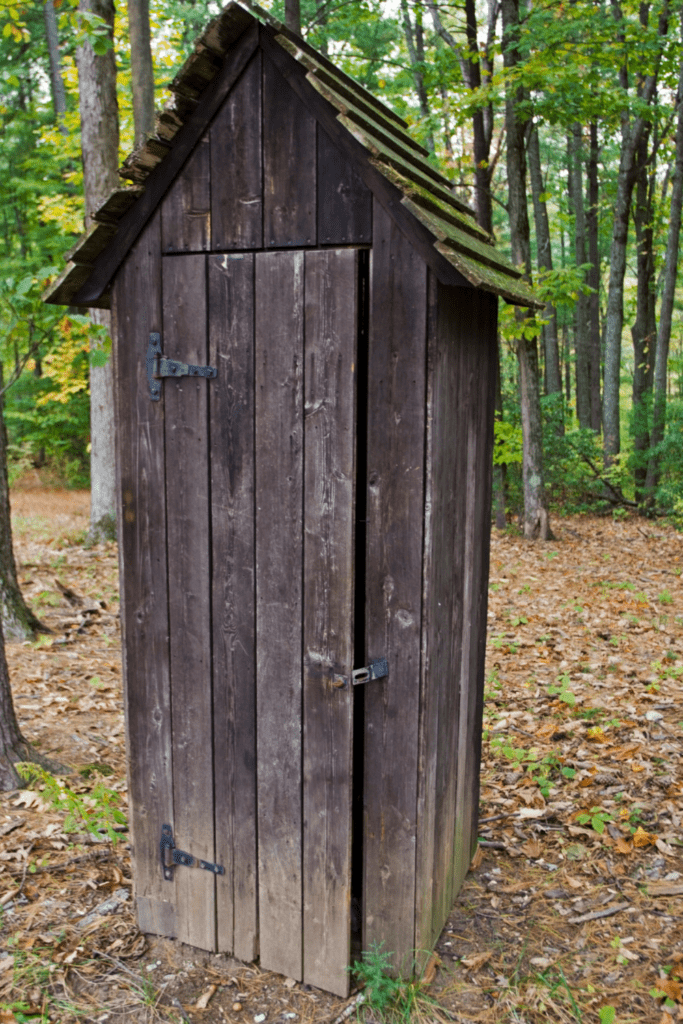
Innovations in Composting Toilet Technology
Composting toilets continue to evolve with groundbreaking advancements that enhance their efficiency, convenience, and environmental friendliness. From improved ventilation systems that ensure optimal airflow and odor control to innovative designs that simplify maintenance and composting processes, the latest innovations in composting toilet technology are revolutionizing the way we approach sanitation.
Whether you’re looking for a compact solution for tiny homes or a high-capacity system for commercial use, there’s a composting toilet technology to suit your needs.
Shift Towards Eco-Friendly Sanitation Practices
As stewards of our planet, it’s thrilling to witness a growing movement towards sustainable living and environmental consciousness. This shift towards eco-friendly sanitation practices represents a significant step forward in preserving our precious natural resources and reducing our environmental footprint. From composting toilets to water-saving fixtures, there’s a wealth of innovative solutions available to help us create a healthier, more sustainable world.
Conclusion
In wrapping up, let’s celebrate the surge in popularity of composting toilet systems as a remarkable step towards embracing sustainable and eco-friendly sanitation solutions. By grasping the benefits, mechanics, and practicalities of composting toilets, we empower ourselves and our communities to opt for informed choices, moving away from the traditional septic tank setup.
As we gaze into a future centered on eco-conscious living, let’s recognize the pivotal role composting toilets can play in championing a greener, more resource-conscious approach to sanitation. It’s time to bid farewell to those outdated septic tanks and enthusiastically welcome the composting toilet revolution, ushering in a cleaner, healthier planet for generations to come. Join me in embracing this exciting journey towards a brighter, more sustainable future!
Composting toilet systems can transform off-grid living—learn more by reading How to Live on Raw Land.
Resources: Here are some helpful resources for further information.
- Composting Toilets: How They Work and the Benefits of Having One In Your RV – By J.D. Power
- How Does a Composting Toilet Work? – By Treehugger
- Complete Guide to Waterless Composting Toilets – By HomeBiogas
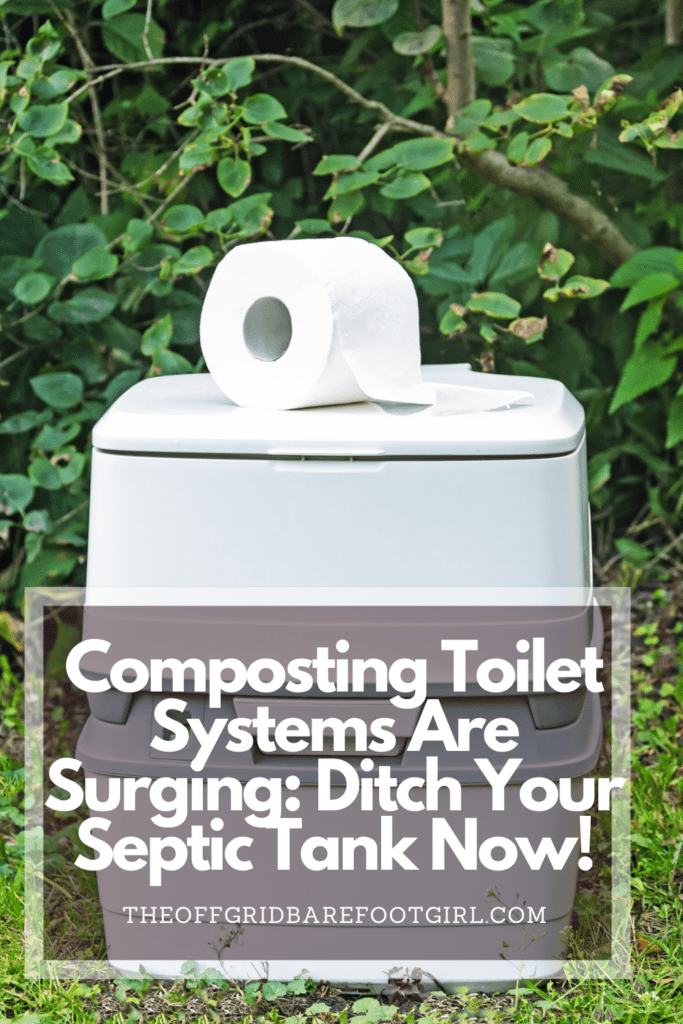
Frequently Asked Questions
1. Are composting toilets odorous?
Composting toilets are designed to minimize odors through proper ventilation and decomposition processes. When maintained correctly, composting toilets should not produce strong or unpleasant smells.
2. Can composting toilets be used in all climates?
Composting toilets can function effectively in various climates, but adjustments may be needed for extreme cold or humid conditions. Proper insulation and ventilation can help optimize composting performance in different environmental settings.
3. How often do composting toilet systems need to be emptied?
The frequency of emptying a composting toilet depends on factors such as usage, composting capacity, and system design. In general, most systems require emptying every few months to a year, with some models offering continuous composting options.
Summary
I hope I have inspired you to live sustainably with these tips and products.
If you were encouraged by this post, I invite you to check out my FREE Printables Page for fun free printables, planners, and charts.
ENTER MY FREE Printables Page HERE
Here are some more of my gardening inspiration posts to check out!
How to Feed Your Family During the Government Shutdown
12 Best Tips for Creating an Eco-Friendly Household
Survival Lessons from the Great Depression
The Best 15 Homesteading Blogs to Follow for Inspiration
How to Criminal-Proof Your Home with These 5 Steps
How to Create Your Cottagecore Aesthetic Dream Home
Ideas for Rustic Living Room Vibes You’ll Love All Year Round!
How to Prep Your Home for Chilly Fall Nights
Bring Back the Magic of Fireflies and Lightning Bugs with Solar Power!
The Ultimate Portable Power Bank for Homesteaders and Preppers!
A Bug Out Bag That’s Actually Ready — When You Need It Most!
Magical Ways to Use Fairy Lights in Your Off-Grid Home
How to Live a Cozy Off-Grid Life
The Best Off-Grid Kitchen Tools for Indoors (No Power Needed!)
DIY Solar Made Simple: How I Powered My Off-Grid Life with Practical Preppers!
Sleeper Cells in America: What You Need to Know Now!
How People Are Surviving in Broken Cities with Broken Systems
When the World Hurts, We Prepare with Purpose
How to Live On Raw Land: Everything You Need to Know!
How to Do Off-Grid Laundry with Eco-Friendly Laundry Detergent!
Hollywood on Fire! What Secrets Are In the Ashes?
FEMA Concentration Camps? Are Echos of the Past Returning?
How Likely Is a Russian EMP? One Pulse Could Black Us Out!
What Dark Secrets Lie in The Bird Flu Symptoms?
The Blackout Sun: Who Is Blacking Out Our Sunlight?
More Posts!
How to Bug-In During a Deep Freeze!
‘FOGVID-24?’ What’s in the Mysterious Fog That’s Making Everyone Sick?
From Snow to Sow: Plan Your Spring Garden Now!
11 Fun Ways to Brighten Your Spring Garden with Personality
Top 10 Spring Garden Crops to Harvest in 30 Days and Eat Now!
The Best Survival Crops for Caloric Survival
More Posts!
My Victory Garden: What I Learned from 5+ Years
Why Every Family Should Have a Victory Garden in Their Backyard Now!
The Best Perennials for a Long-Term Survival Garden
The Best Essential Oils for Plants That Repel Garden Bugs
How to Grow Green Garden Peas: Perfect Plump Peas!
Hugelkultur: Does This Epic Pioneering Method Actually Work?
9 Ways to Celebrate Earthing Day in Your Garden!
Gardening Indoors: Secrets of Growing Your Food Inside!
How to DIY a Milk Jug Drip Irrigation System!
Why Cedar Mulch Is The Perfect Natural Weed Barrier
Gardening Projects
Onions: How to Grow Onions for Storage
Peas: How to Grow Garden Peas for a Bumper Crop
Carrots: How to Grow Carrots for a Bountiful Harvest
Prep Your Garden for Spring Planting with These Expert Tips!
How to Grow a Prepper Garden to Survive and Thrive
The Best Garden Tools You Need for a Productive Season
Fastest Growing Vegetables for Your Survival Garden
How to Grow Marigolds As Pest Control In Your Vegetable Garden
Must-Have Tools for a Successful Balcony Vegetable Garden
How to Effectively Combat Powdery Mildew in Your Garden
The Best Tips for Organic Gardening
How to Release Ladybugs In Your Garden for Organic Pest Control
More Posts!!
The Best Garden Snail Control Strategies
The Best Spring Vegetables to Grow in Your Garden
Seed Starter Mix: How To Make Your Organic Seed Starter Mix At Home
How to Grow a Productive Canning Garden
How to Plant and Grow a Salsa Garden
Easiest Heirloom Vegetable Seeds to Grow Now
How to Use the Hand Twist Claw Tiller: Tackling Tough Soil
More Fun Gardening Posts to Check Out!
Planning Your Garden: How to Plan a Vegetable Garden: Expert Green Thumb Tips!
Winterizing the Garden: How to Winterize Your Vegetable Garden: Step-by-Step Checklist
Mulching the Garden: How to Make Leaf Litter Mulch
Grow a Pumpkin Patch: How to Grow a Pumpkin Patch in Your Backyard
How to Grow a Fall Garden: 9 Best Fall Crops
Clever Ways to Incorporate Indoor Composting into Your Home
How to Start Composting for the Garden: A Step-by-Step Guide
The Ultimate Guide to Composting in Your Suburban Backyard
Why I Built A Survival Garden in My Backyard
16 Best Medicinal Herbs to Grow in Your Garden Now
Blessings,
The Off Grid Barefoot Girl

